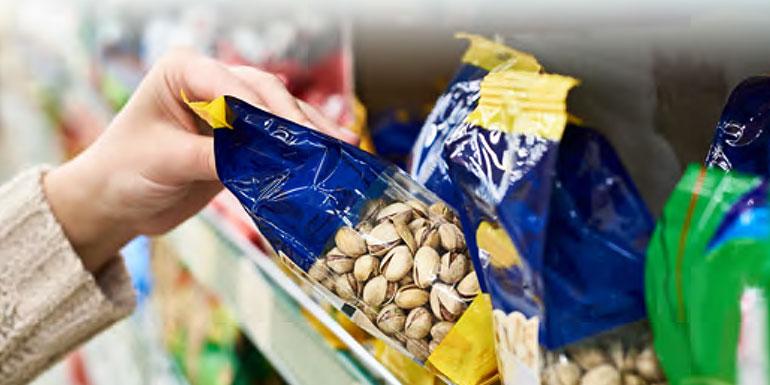FCMAs, additives, PAAs: updates and developments

It is European regulations focused on food contact materials and widely used additives such as E 171 that are the focus of attention for Sun Chemical, the world’s leading manufacturer of inks and coatings for all printing processes.

In a recent and substantial communication addressed to its customers, Sun Chemical stressed the relevance of a number of new legislative changes with respect to potential risks of food contact materials, on which control bodies have been legislating for some time.
Between the lines was a call to support the European Commission in revising the EU regulatory framework to enhance the development of a uniform European regulation on inks. We also recall that, in this context, a sure reference remains the concepts established by EuPIA (European Printing Ink Association), to guarantee the safety of printed packaging.
Legislation on FCM postponed until 2023
The European Commission has indicated that the ongoing review and revision of European Union (EU) food-contact material (FCM) legislation is likely to be delayed until early 2023.
Linking the FCM rules with the upcoming EU chemicals strategy legislation is an important factor. The EuPIA and the Packaging Ink Joint Industry Task Force (PIJITF) have provided feedback to the consultation, emphasizing that the priority should be on the timely development of further specific measures for nonharmonized materials, especially printed FCMs, and such specific measures should incorporate industry risk assessment for nonlisted substances.
The Council of Europe’s European Directorate for the Quality of Medicines & Health Care (EDQM) has published a technical guide entitled Paper and board used in food-contact materials and articles, following the adoption of Resolution CM/Res(2020)9 on the safety and quality of materials and articles for contact with food. The publication incorporates the resolution and its guiding principles and provides technical guidance relating to the requirements, compliance testing and supporting documentation for paper and board materials.
The guidance document is expected to improve the protection of consumers against contaminants (metals, antioxidants, stabilizers, colorants, plasticizers, etc.) potentially released by materials in contact with food (packaging, containers, plates, cups, straws, baking and filter papers, napkins, etc.). It also aims to support the harmonization of regulatory approaches to consumer health protection across Europe.
Precautions against E 171 as a food additive
The potential genotoxicity of Titanium Dioxide also stands out among the issues in the focus of European legislators. The European Commission has published Regulation (EU) 2022/63 (amending Regulation (EC) No. 1333/2008 on food additives) in which titanium dioxide (E 171) is no longer authorized for use as a food additive after August 7, 2022. This follows the European Food Safety Authority’s (EFSA) opinion of May 2021, which concluded that a concern for genotoxicity could not be ruled out based on the available data.
Also, due to the many uncertainties and following a precautionary approach, E 171 could no longer be considered as safe when used as a food additive. This latest opinion diverges from previous opinions in 2016, 2018 and 2019, which concluded that the use of titanium dioxide as a food additive did not raise a genotoxic concern.
The discrepancy seems to be linked to gaps in the toxicity data available for, and relevance of extrapolation from, different particle size distributions. EFSA highlighted the need for more research to fill the data gaps.
Nothing changes for pharmaceuticals and inks
Interestingly, although it is no longer authorized for use in food, titanium dioxide is still listed in Regulation (EC) No. 1333/2008 to allow continued use in medicinal products according to Directive 2009/35/EC. Furthermore, EFSA stated that their evaluation is related to the risks of titanium dioxide used as a food additive and not to other uses.
The EuPIA has issued a statement which confirms that neither the EFSA opinion nor Regulation (EU) No. 2022/63 affects the legal status of the use of titanium dioxide in printing inks for food-contact materials, neither under EU legislation for food-contact materials nor under the Swiss Consumer Goods Ordinance (SR 817.023.21), and concludes that titanium dioxide can continue to be used in printing inks for food-contact applications, without risk for the consumer.
Detecting Primary Aromatic Amines (PAAs) in Adhesives
Due to the toxicological concerns about PAAs (some of them are carcinogens, while others are suspected carcinogens), they are subject to legal restrictions, such as low specific migration limits in food-contact materials. Previously, a photometric sum method was sufficient to prove compliance with legislation. However, this method is no longer recommended due to sensitivity limitations.
Most of the methods now use liquid chromatographic separation of the PAAs in the migration solution via high-performance liquid chromatography (HPLC), followed by detection of the separated PAAs via mass spectrometry (MS) or diode array detectors (DAD) to achieve a detection limit of 0.002 mg/kg food or simulant. A concentration step, e.g. via solid phase extraction, can be a helpful option to establish the required limit of detection.
















